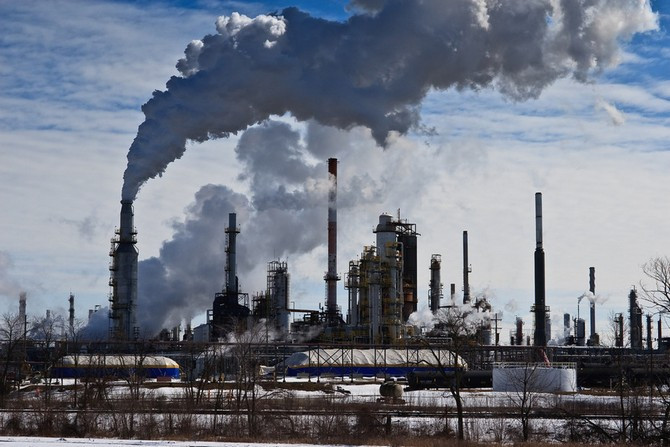Have you found a way to 'lock' faster carbon against climate change?
An important measure in the fight against carbon emissions into the atmosphere is to accelerate the "lock" of carbon in water or ice as quickly as possible.
The process of locking carbon in water or stone is understood as the process of carbon absorption . The chemical evolution is related to some complex chemical reactions. And recent research by scientists has discovered how to accelerate that reaction 500 times faster.

The faster the process becomes, the easier it is for people to cope with high levels of carbon in the atmosphere.
This is a measure to remove the long-standing bottlenecks that scientists seek. The faster the process becomes, the easier it is for people to cope with high levels of atmospheric carbon and global warming.
According to ScienceAlert, the study of carbon "lock" is the result of cooperation between the California Institute of Technology (Caltech) and the University of South California (USC). The research inspiration comes from how the ocean absorbs CO2 in the atmosphere. In fact, the amount of CO2 in the ocean is 50 times more than the atmosphere.
The research leader, Adam Subhas, believes that people can mimic the ocean's chemical mechanism to capture and lock carbon.
Although CO 2 is constantly moving between air and water, the combination of wind and underwater disturbances makes ocean locking CO 2 easy. CO 2 "locked" in the ocean will gradually settle to the bottom and be "neutralized" by sediments of calcium carbonate (CaCO 3 ). But this process will take thousands of years.

The amount of CO2 in the ocean is 50 times more than the atmosphere.
In contrast, the increasing amount of carbon dioxide released into the atmosphere is also the leading cause of ocean acidification. The unspeakable threat of ocean acidification may not be controversial, since there are many coral reefs that die because of the high acidity in the water.
Research by American scientists also focused on understanding chemical reactions that lead to "bleaching" of corals. Meanwhile, many previous studies used pH measurements or acidity measurements to find the melting rate of CaCO 3 . But the latest research focuses on isotope marking. This method enables researchers to track individual molecules with a sensitivity 200 times higher than other methods. The technique used in the study helps to observe the slow neutralization process, essentially the conversion of CO2 and water into carbonic acid (H 2 CO 3 ).
From observations, scientists have understood the mechanism of accelerating carbon absorption. By adding carbonic anhydrase enzymes (enzymes that help balance pH levels in human blood and many other animals), carbon absorption is significantly accelerated.
In addition to reducing emissions, building "capturing" plans and reducing the amount of CO2 in the atmosphere is one of the top priorities.

Turning CO 2 into stone is also one of the solutions to reduce CO2 in the atmosphere considered by many scientists.
Last year, researchers at the Max Planck Terrestrial Microbiology Institute, Germany, learned how to improve the method of using plants to draw carbon out of the atmosphere. And if the research of American scientists soon proved practical, people can "rescue" themselves.
Research has been published in the recent PNAS journal.
- The time bomb of the climate
- This is the last shield to minimize the effects of climate change?
- Birds fly faster due to climate change
- Marching for climate change around the world
- Climate change is happening faster than expected
- Proposing 'paradoxical': Discharging more CO2 can limit climate change
- Climate change makes organisms evolve faster
- Is nuclear energy necessary to address climate change?
- The formation and development of locks and keys
- Flowers bloom faster because of climate change
- Carbon is not the enemy of the Earth, the world needs to reconsider it
- People have made the pace of climate change hundreds of times faster
 Is the magnetic North Pole shift dangerous to humanity?
Is the magnetic North Pole shift dangerous to humanity? Washington legalizes the recycling of human bodies into fertilizer
Washington legalizes the recycling of human bodies into fertilizer Lightning stone - the mysterious guest
Lightning stone - the mysterious guest Stunned by the mysterious sunset, strange appearance
Stunned by the mysterious sunset, strange appearance